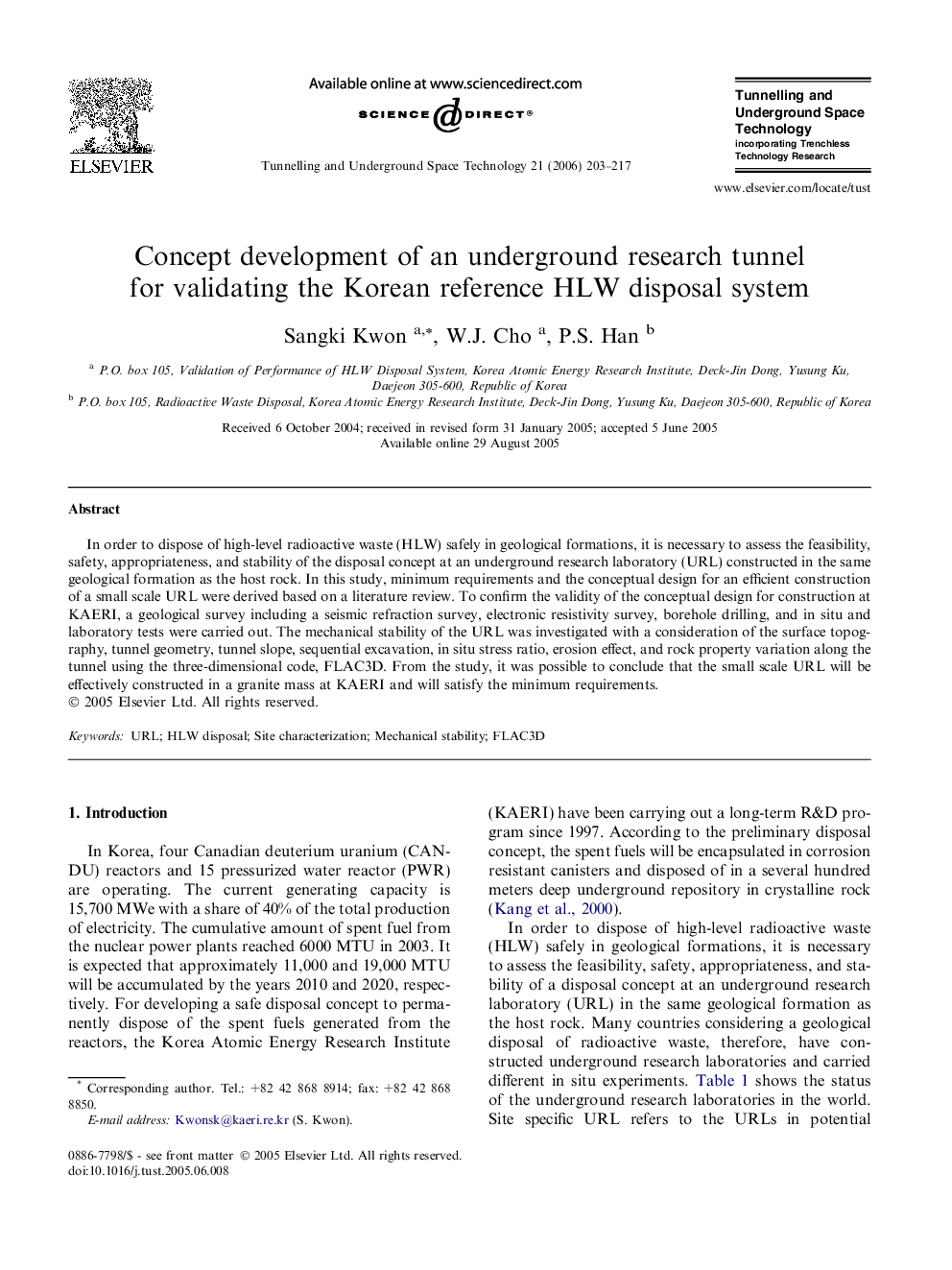| Article ID | Journal | Published Year | Pages | File Type |
|---|---|---|---|---|
| 311109 | Tunnelling and Underground Space Technology | 2006 | 15 Pages |
In order to dispose of high-level radioactive waste (HLW) safely in geological formations, it is necessary to assess the feasibility, safety, appropriateness, and stability of the disposal concept at an underground research laboratory (URL) constructed in the same geological formation as the host rock. In this study, minimum requirements and the conceptual design for an efficient construction of a small scale URL were derived based on a literature review. To confirm the validity of the conceptual design for construction at KAERI, a geological survey including a seismic refraction survey, electronic resistivity survey, borehole drilling, and in situ and laboratory tests were carried out. The mechanical stability of the URL was investigated with a consideration of the surface topography, tunnel geometry, tunnel slope, sequential excavation, in situ stress ratio, erosion effect, and rock property variation along the tunnel using the three-dimensional code, FLAC3D. From the study, it was possible to conclude that the small scale URL will be effectively constructed in a granite mass at KAERI and will satisfy the minimum requirements.
